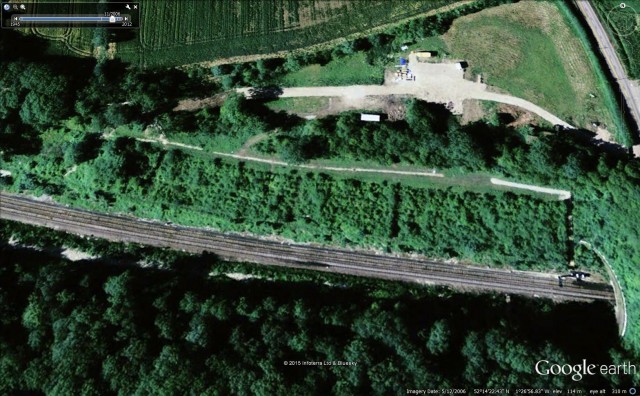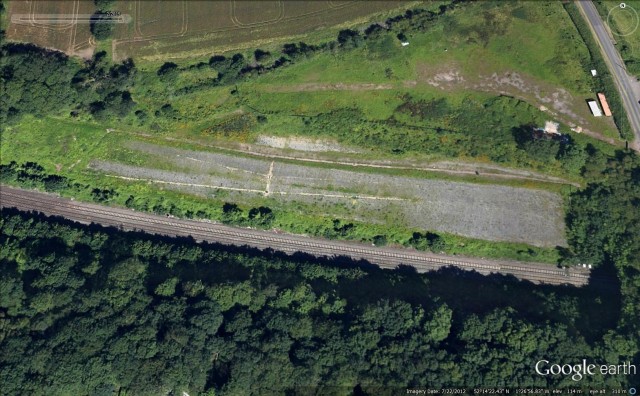27 February 2015
George Monbiot and the Harbury landslide
Posted by Dave Petley
George Monbiot
George Monbiot is a renowned writer and commentator, primarily on environmental and social justice issues, who pens a regular article in the UK newspaper The Guardian. I admire his work greatly – The Guardian is my newspaper of choice – primarily because he has an ability to see through clarity through complex issues. Interestingly, earlier this week he wrote an article focused primarily on the Harbury landslide, entitled “Our government’s big green idea: let’s subsidise natural disasters“. The point of the article is good and sound – he is making the argument that poor slope management in the uplands of the UK is increasing the occurrence of land degradation and landslides. I have no issue with this – indeed I welcome the observation. Upland catchments in the UK should be managed much more proactively to mitigate erosion, landslides and downstream flooding, rather than to the benefit of a small number of wealthy land owners. This will become more acute as the climate changes over the next few decades.
But, George Monbiot’s linkage of this issue to the Harbury landslide looks to be wide of the mark. He notes that in the years prior to the landslide Network Rail cleared the embankments of vegetation, most notably the larger trees. George Monbiot links this to the increase in landslides along the line:
“The Harbury cutting is one of the deepest and steepest in the UK. The satellite photographs show that in 2006 the slope was heavily forested. The next image, captured in 2010, reveals that the trees had been removed and it had been scraped from top to bottom. By 2012, when the most recent Google Earth image was taken, it remained bare and grey.
“Network Rail, which carried out this work in 2008, says it did so to protect the track. But grubbing out the trees, leaving the soil bare and scouring it vertically, without at least greatly lengthening the slope to reduce its angle, looks to me like a spectacular act of folly.”
And indeed George Monbiot is correct that Google Earth images do show the removal of vegetation from the slope during this period. This is the Google earth image from 2006:
.
And this is the 2012 image:
.
But look carefully at the images and you will see that this is much more complex than simple tree removal. It appears to me that the slope has been deliberately reprofiled, with the top layers having been removed, presumably to increase stability. In addition, it is very clear that drains have been installed. So this is self-evidently not a case of simple removal of trees, but rather a concerted effort to improve the stability of the slope.
And incidentally, it is quite reasonable and indeed sensible for Network Rail to remove trees from embankments. In the UK the embankments were frequently constructed well over a century ago. Stability in these cuttings is dependent on the drainage system, which is sophisticated (the Victorians were very good engineers) but vulnerable to disturbance. Large trees damage the drains, so it is sensible to remove them before this happens. Broken drains focus water at particular points, greatly increasing the likelihood of failure. And of course large trees can also fall onto the line, which represents a hazard in its own right.
And then of course we should take a look at the 2015 landslide. On Youtube there is a very nice video of the landslide taken from a drone:
.
What is clear from this video is that the landslide was very deep-seated – indeed, it was far too deep to have been affected in any significant way by the presence or absence of trees. So, the suggestion that this landslide was the result of removal of the vegetation is not correct, and is somewhat unfair on Network Rail, who face a very difficult challenge in maintaining this infrastructure at a time of falling budgets.
However, the more general point that George Monbiot makes about better management of the countryside in the UK is spot on.




 Dave Petley is the Vice-Chancellor of the University of Hull in the United Kingdom. His blog provides commentary and analysis of landslide events occurring worldwide, including the landslides themselves, latest research, and conferences and meetings.
Dave Petley is the Vice-Chancellor of the University of Hull in the United Kingdom. His blog provides commentary and analysis of landslide events occurring worldwide, including the landslides themselves, latest research, and conferences and meetings.
I also note that the article goes on to link the debris flows on the A83 directly to sheep.
“If the works did cause the slip, they are consistent with the idiotic management of sloping ground across Britain and much of the world. Take, for instance, the hillside above the A83 in western Scotland. One section of this road is closed by landslides every few months, costing hundreds of thousands of pounds to clear. The Scottish government is now spending millions on complex engineering to stabilise the slope.
A report it published in 2012 acknowledges that sheep are likely to be partly responsible: they make the slope unstable by compacting and eroding the soil and preventing trees and shrubs growing. It notes that the number of sheep exceeds the danger point beyond which erosion becomes severe. But when I last saw the hillside two and a half years ago, after the report had been published and massive spending had begun, the sheep were still there. Every animal on that brae is likely to have cost taxpayers thousands of pounds a year.”
Whilst land management is part of landslide hazard management and land mismanagement clearly can cause issues, the A83 and Handbury are not appropriate examples in the context of the story
………. never let facts get in the way of a good story?
Dear Dr. Dave,
I saw the Guardian column yesterday and it seemed to me that George felt that National Rail was being less than forthcoming with information. However it is possible they were being honest if a bit coy when they said they removed the trees to protect the rails (and then tried to mitigate the loss with terra forming). Perhaps they assessed the risk of a landslide as less hazardous than the CERTAINTY of trees falling, not only on the rails but potentially on a passing train, causing injury.
Everywhere, crews are swarming along highways, railroads, and electrical lines, amputating limbs and cutting entire trees in a frenzy, because power companies and transportation departments are aware that the trees are dying and hazardous.
This is true where I live in the US, and elsewhere in the world, including the UK – which has actually declared a state of emergency because the prognosis for trees is so poor. Almost all UK foresters blame invasive insects, disease and fungus…but this is absurd as an explanation, since native pathogens have also become epidemics – and besides, Europe was importing massive amounts of exotic nursery stock and tree products for all the centuries their empires ruled distant lands. If the fundamental problem were invasive species it would have happened long ago.
The biotic epidemics are opportunistic attacks on trees that are already dying from pollution.
Lastly, I think you may underestimate how much trees contribute to slope stability. When healthy, their roots absorb enormous amounts of water which is then released to the atmosphere via evapotranspiration, and their roots are interconnected with mycelia in the soil. Also, when the trees are cut the entire biome is disturbed and plants in the understory die too.
Yesterday I sent George Monbiot a short video about the issue – I hope you enjoy it and consider, that although some types of plants are more resistant to excess nitrogen and ozone than others, the biomass of vegetation in general is being diminished and contributes to an increase in landslides (as well as countless other negative ecosystem effects) – https://www.youtube.com/watch?v=sn1Xy_j48k0
George Monboit’s thinking might have been influenced by the behavior of the opposite bank of the cutting…. It wasn’t cleared, and didn’t fail.